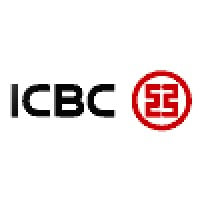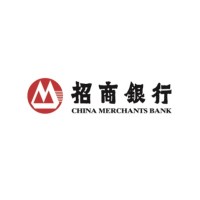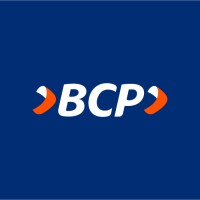Company Cyber Security Posture
NANA
NA Company Details
NA
NA
NA
NA
NA
NA
Scan still pending
NA
NA
Between 200 and 800
This score is AI-generated and less favored by cyber insurers, who prefer the TPRM score.
 NA Global Score
NA Global Score.png)

Company Scoring based on AI Models
| Model Name | Date | Description | Current Score Difference | Score |
|---|---|---|---|---|
| AVERAGE-Industry | 03-12-2025 | This score represents the average cybersecurity rating of companies already scanned within the same industry. It provides a benchmark to compare an individual company's security posture against its industry peers. | N/A | Between 200 and 800 |
Company Cyber Security News & History
| Entity | Type | Severity | Impact | Seen | Url ID | Details | View |
|---|
Company Subsidiaries

NA
Access Data Using Our API

Get company history
.png)
NA Cyber Security News
China Issued Draft Administrative Measures for Reporting of Cybersecurity Incidents in Financial Business Operation
Incident Reporting Requirements · Reporting requirements based on entity type · Large level incidents: For incidents classified as “large level” ...
AI Watch: Global regulatory tracker - China
The Interim AI Measures is China's first specific, administrative regulation on the management of generative AI services.
China Cybersecurity and Data Protection: Monthly Update - June 2025 Issue
This newsletter summarises the latest developments in cybersecurity and data protection in China with a focus on the legislative, ...
China central bank urges state-owned businesses to prioritise yuan in overseas expansion
China's central bank said on Monday it was encouraging state-owned enterprises to prioritise yuan usage in payment and settlement in their ...
NFRA’s first data privacy and security regulations issued | China | Global law firm
The NFRA Data Rules are NFRA's first set of systematic rules regulating data privacy and security of the designated entities, which have been long waited by the ...
Fintech Laws and Regulations Report 2024-2025 China
ICLG - Fintech Laws and Regulations - China Chapter covers a broad overview of common issues in fintech laws and regulations.
China's central bank halts bond buying as yuan struggles
The PBOC cited a shortage of bonds in the market as the reason it was halting the purchases, which were part of its operations to ease monetary ...
2024 Investment Climate Statements: China
The People's Republic of China (PRC) remained the number four Foreign Direct Investment (FDI) destination in the world, according to the IMF.
Dollar Dominance in Peril as China’s Digital RMB Leads Financial Revolution Spanning 200 Countries
In a move shaking the very foundations of global finance, the People's Bank of China has launched its full-scale digital RMB cross-border ...

NA Similar Companies

ING
ING is a pioneer in digital banking and on the forefront as one of the most innovative banks in the world. As ING, we have a clear purpose that represents our conviction of people’s potential. We don’t judge, coach, or tell people how to live their lives. However big or small, modest or grand, we em

Banco Sabadell
Banco Sabadell es el cuarto grupo bancario privado español, integrado por diferentes bancos, marcas, sociedades filiales y sociedades participadas que abarcan todos los ámbitos del negocio financiero bajo un denominador común: profesionalidad y calidad. Un equipo humano joven y bien preparado, do

Industrial and Commercial Bank of China
Industrial and Commercial Bank of China Ltd. (ICBC) (simplified Chinese: 中国工商银行; traditional Chinese: 中國工商銀行; pinyin: Zhōngguó Gōngshāng Yínháng, more commonly just 工行 Gōngháng) is China's largest bank and the largest bank in the world. It is one of China's "Big Four" state-owned commercial banks (t

Banco de la Provincia de Buenos Aires
Desde 1822 somos el banco impulsor del desarrollo de la Provincia de Buenos Aires y su gente, invirtiendo en talento y creando valor para nuestros casi 5 millones de clientes. Con más de 400 localizaciones distribuidas entre la Ciudad Autónoma y la Provincia de Buenos Aires y la Banca Internet Pr

China Merchants Bank
Established in 1987 in Shenzhen, the forefront of China’s reform and opening-up drive, China Merchants Bank ("CMB") has developed into the most influential commercial bank brand in China thanks to continuous financial innovation, quality customer service, prudent management and strong business perfo

Banco de Crédito BCP
Somos el banco peruano que desde hace más de 130 años viene liderando el sistema financiero a nivel nacional. A lo largo de todo este tiempo hemos contribuido con el desarrollo económico de nuestro país, transformando planes en realidad. Todo esto es posible gracias al equipo de profesionales de p

Frequently Asked Questions
Explore insights on cybersecurity incidents, risk posture, and Rankiteo's assessments.
NA CyberSecurity History Information
How many cyber incidents has NA faced?
Total Incidents: According to Rankiteo, NA has faced 0 incidents in the past.
What types of cybersecurity incidents have occurred at NA?
Incident Types: The types of cybersecurity incidents that have occurred include .
Additional Questions
What Do We Measure?
















Every week, Rankiteo analyzes billions of signals to give organizations a sharper, faster view of emerging risks. With deeper, more actionable intelligence at their fingertips, security teams can outpace threat actors, respond instantly to Zero-Day attacks, and dramatically shrink their risk exposure window.
These are some of the factors we use to calculate the overall score:
Identify exposed access points, detect misconfigured SSL certificates, and uncover vulnerabilities across the network infrastructure.
Gain visibility into the software components used within an organization to detect vulnerabilities, manage risk, and ensure supply chain security.
Monitor and manage all IT assets and their configurations to ensure accurate, real-time visibility across the company's technology environment.
Leverage real-time insights on active threats, malware campaigns, and emerging vulnerabilities to proactively defend against evolving cyberattacks.




